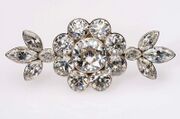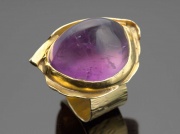Difference between revisions of "Carat"
Jump to navigation
Jump to search
m (Text replace - "== Authority ==" to "== Sources Checked for Data in Record ==") |
|||
| (2 intermediate revisions by the same user not shown) | |||
| Line 1: | Line 1: | ||
| − | [[File:2006.47-SC176532.jpg|thumb| | + | [[File:SC297850.jpg|thumb|Brooch with over 19 carats of cut diamonds<br>MFA# 2013.1776]] |
| + | [[File:2006.47-SC176532.jpg|thumb|Amethyst ring with 18kt gold<br>MFA# 2006.47]] | ||
== Description == | == Description == | ||
| Line 10: | Line 11: | ||
karat; Karat (Deut.); carat (Fr.); fine | karat; Karat (Deut.); carat (Fr.); fine | ||
| − | == | + | ==Resources and Citations== |
* David C. Scott, ''Metallography and Microstructure of Ancient and Historic Metals'', The Getty Conservation Institute, Los Angeles, 1991 | * David C. Scott, ''Metallography and Microstructure of Ancient and Historic Metals'', The Getty Conservation Institute, Los Angeles, 1991 | ||
Latest revision as of 13:49, 19 May 2022
Description
1) A unit of weight for gemstones. One carat is 200 milligrams. Carat was used in the middle ages by alchemists.
2) (usually spelled karat) A unit of measure for the purity of gold. Pure gold is 24 karat or 1000 fine. A gold alloy that contains 75% gold is 18 karat or 750 fine.
Synonyms and Related Terms
karat; Karat (Deut.); carat (Fr.); fine
Resources and Citations
- David C. Scott, Metallography and Microstructure of Ancient and Historic Metals, The Getty Conservation Institute, Los Angeles, 1991
- The American Heritage Dictionary or Encarta, via Microsoft Bookshelf 98, Microsoft Corp., 1998
- Random House, Webster's Encyclopedic Unabridged Dictionary of the English Language, Grammercy Book, New York, 1997

